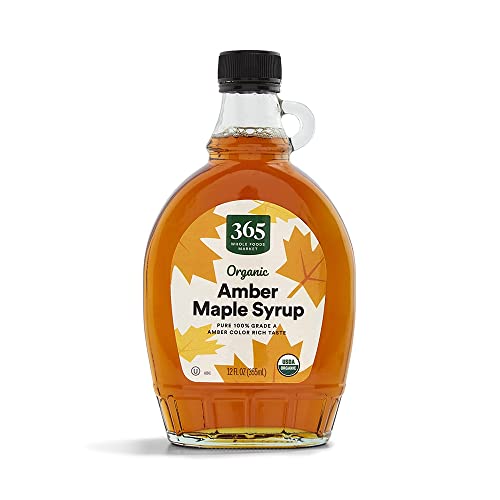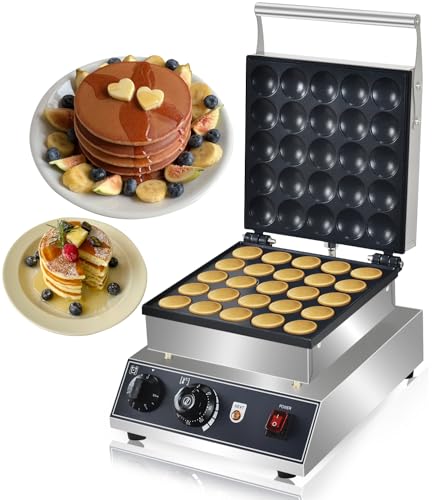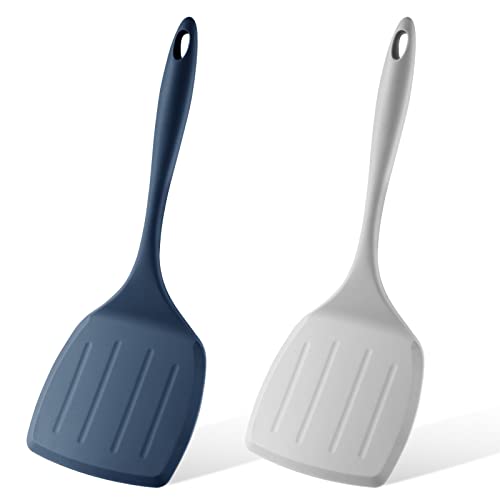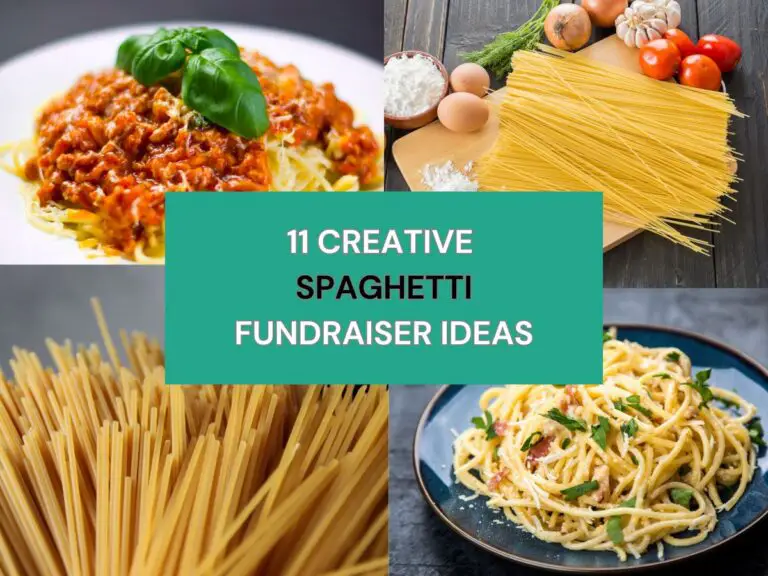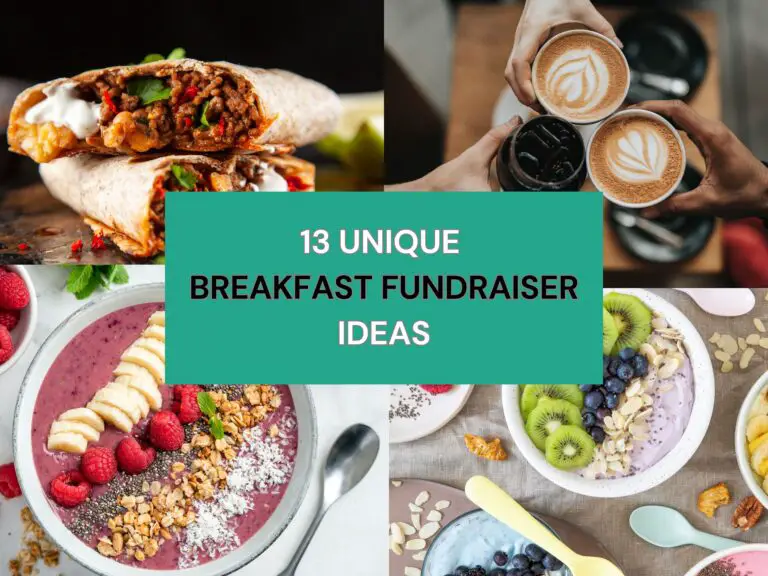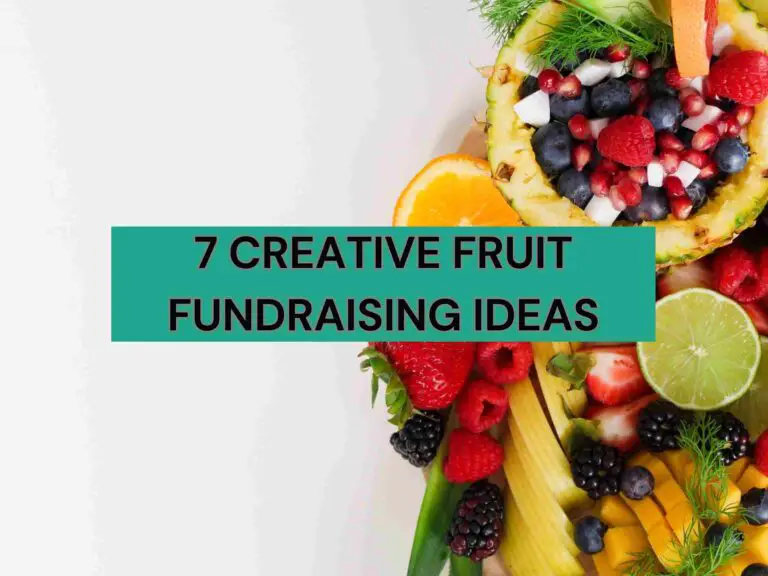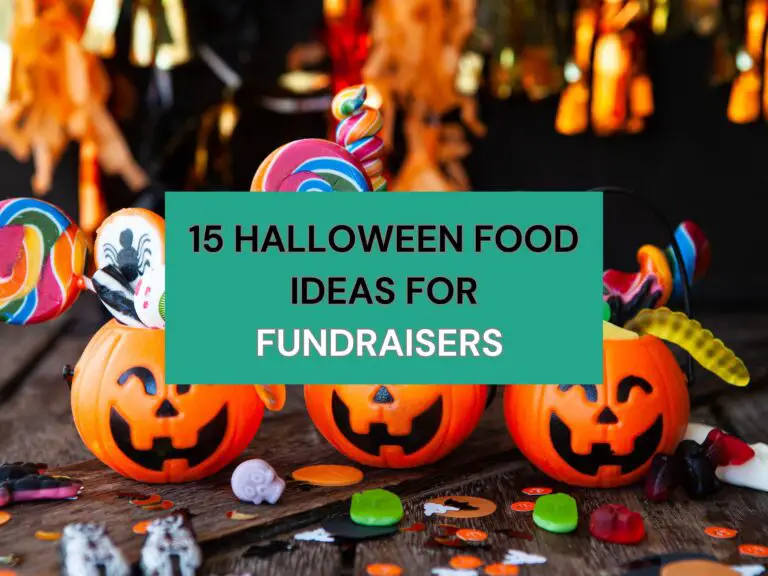Ultimate Guide on how to Plan a Pancake Breakfast Fundraiser!
This post may contain affiliate links. If you purchase through one of these links, I may receive a small commission at no extra cost to you. As an Amazon Associate, I earn from qualifying purchases.

Are you struggling to find a powerful way to raise money for your cause? Do questions about event planning, volunteer recruitment, and getting the word out keep you up at night? Wondering how to plan a pancake breakfast fundraiser that brings in big results without major headaches? You know the potential, but the details feel overwhelming.
Stop worrying. This article is your complete guide. It cuts through the confusion and gives you a clear path to success. We deliver the exact steps you need, making your fundraising journey straightforward and effective. This is not just advice; it is a proven plan to help you achieve your goals.
Inside, you get a full breakdown of every step. From picking the perfect date and finding your venue, to gathering your dream team of volunteers and setting smart ticket prices, we cover it all. You learn exactly what supplies you need, how to promote your event so everyone knows about it, and how to run the big day without a hitch. This article’s unique strength is its direct, actionable steps, ensuring you move from idea to a packed house and a successful fund.
Key Takeaways
Get organized from the start, set clear money goals, and know exactly what you need to do. This lays the groundwork for a smooth event.
Tell everyone in your community about your breakfast and why it matters. Strong promotion brings a big crowd to support your cause.
On event day, make sure every detail runs perfectly. After breakfast, always thank your supporters and show them the real impact of their help.
A Comprehensive Guide on How to Plan a Pancake Breakfast Fundraiser
There’s something universally appealing about a stack of fluffy pancakes, dripping with syrup and piled high with toppings. And when you combine that deliciousness with a worthy cause, you’ve got a recipe for fundraising success! A pancake breakfast fundraiser is a fantastic way to bring your community together, raise money, and have a whole lot of fun.
1. Why a Pancake Breakfast?
Before diving into the nuts and bolts of planning, it’s important to understand why a pancake breakfast is such a powerful fundraising tool.
- Universal Appeal: Pancakes are a comfort food enjoyed by people of all ages and backgrounds. Their simplicity and deliciousness make them a universally appealing meal. This broad appeal means you can attract a diverse group of attendees, from families with young children to senior citizens.
- Cost-Effectiveness: The ingredients for pancakes – flour, eggs, milk, and syrup – are relatively inexpensive when purchased in bulk. This allows for a good profit margin, meaning more of the money raised goes directly to your cause.
- Community Building: A pancake breakfast is more than just a meal; it’s a social event. It provides a wonderful opportunity for community members to gather, share a meal, and connect with each other in a relaxed atmosphere. This sense of togetherness can strengthen community bonds and foster goodwill towards your organization.
- Volunteer Engagement: The preparation and serving of a pancake breakfast require a team effort, making it an excellent opportunity to engage volunteers. Volunteers can contribute in various ways, from cooking and serving to greeting guests and washing dishes, creating a sense of shared purpose and accomplishment.
- Flexible Format: Pancake breakfasts can be adapted to various scales and settings. Whether you’re aiming for a small, intimate gathering or a large-scale community event, the format is flexible enough to accommodate your needs and resources.
2. Initial Planning and Goal Setting
The success of any event begins with thorough planning. This initial phase sets the stage for everything that follows.
- Define Your Purpose and Goals:
- Clearly state the cause or project your fundraiser will support. Is it for new equipment, a scholarship, a community program, or disaster relief? A clear purpose motivates both planners and attendees. For example, “Funds raised will provide new textbooks for underprivileged students.”
- Set a realistic financial goal. How much money do you aim to raise? Break this down. If you want to raise $1,000, and tickets are $10, you know you need to sell 100 tickets. This objective will guide your pricing, marketing, and overall effort.
- Identify your target audience. Are you aiming for families, specific community groups, or the general public? Knowing your audience will influence your marketing and event design.
- Form Your Core Committee:
- Even for a smaller event, having a few dedicated individuals to lead different aspects is crucial.
- Event Coordinator who oversees all aspects.
- Volunteer Coordinator who recruits, trains, and manages volunteers.
- Logistics Coordinator to handle venue, equipment, and supplies.
- Marketing & Promotions Coordinator who manages advertising and public relations.
- Finance Coordinator who oversees budgeting, ticket sales, and money handling.
- Clear roles prevent confusion and ensure all tasks are covered.
- Set a Timeline:
- Begin planning at least 2 to 3 months in advance for a moderately sized event. Larger events may require 4-6 months.
- Key Milestones:
- Month 3-4 (or earlier): Define purpose, set goals, form committee, research venues, set date.
- Month 2-3: Secure venue, start volunteer recruitment, budget creation, begin supplier outreach (donations).
- Month 1-2: Finalize menu, secure supplies, begin marketing, open ticket sales.
- Weeks 2-4 before: Intensify marketing, volunteer training, final confirmations.
- A week before: Final supply check, detailed schedule for event day.
- Day of: Event execution.
- After event: Cleanup, thank yous, financial reconciliation.
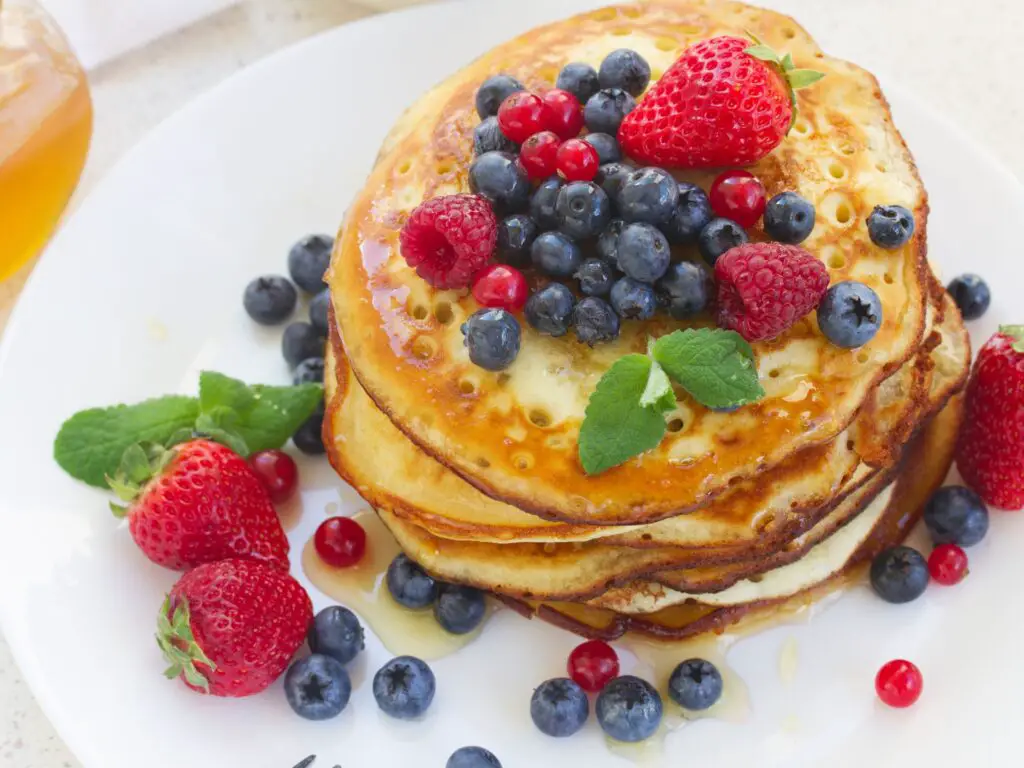
3. Set The Venue
Choosing the right location is paramount. It affects capacity, logistics, and atmosphere.
- Factors to Consider:
- Check the capacity to see if it comfortably holds the number of guests you expect.
- Kitchen Facilities to have a well-equipped kitchen with griddles, ovens, refrigeration, and ample counter space? Is it suitable for food preparation for a large group?
- Dining Area: Is there enough seating? Is the layout good for serving lines and guest flow?
- Restrooms: Are there enough clean and accessible restrooms?
- Parking: Is there ample and convenient parking for attendees and volunteers?
- Accessibility: Is the venue accessible for individuals with disabilities (ramps, elevators)?
- Cost: What are the rental fees? Are there any hidden costs (cleaning fees, security deposits)? Sometimes, venues might offer a discount or free use for charity events.
- Location: Is it easily accessible to your target audience? Is it well-known in the community?
- Potential Venues:
- Community Centers: Often have large halls and kitchens, designed for public events.
- School Gyms/Cafeterias: Excellent for large crowds, often have industrial kitchens.
- Churches/Religious Institutions: Many have fellowship halls with kitchens and are often supportive of community initiatives.
- Local Event Halls or Recreation Centers: May offer rental spaces at competitive rates.
- VFW/Legion Halls: Often have large dining areas and kitchens.
- Booking the Venue:
- Contact potential venues early to check availability.
- Inquire about their policies for food preparation, insurance requirements, and cleanup.
- Get a written agreement or contract detailing all terms, costs, and dates.
Related Articles:
21 Mouthwatering Church Fundraiser Meal Ideas
33 Fun Snack Fundraisers for Schools That Pay Off
13 Tasty Food Fundraising Ideas for Church
4. Recruiting and Managing Volunteers
Volunteers are the backbone of any successful pancake breakfast fundraiser. Their dedication and effort will make your event possible.
- Identifying Volunteer Needs:
- Kitchen Crew: Griddle masters (the most important!), batter mixers, egg scramblers, sausage/bacon cooks.
- Serving Line: People to serve pancakes, toppings, syrup, sides, and drinks.
- Dining Area: Table setters, bus persons, clean-up crew.
- Greeters/Ticket Takers: Welcome guests, sell tickets, and provide information.
- Dishwashers: Keeping dishes clean is crucial for hygiene and efficiency.
- Setup/Teardown Crew: Moving tables, chairs, decorations.
- Runners: People to quickly fetch items, and help where needed.
- Recruitment Strategies:
- Community Outreach: Post flyers in local businesses, community centers, and libraries.
- Social Media: Announce volunteer opportunities on your charity’s social media pages.
- Email Lists: Reach out to your existing network of supporters.
- Local Groups: Contact schools (for student volunteers, supervised), scout troops, church groups, or corporate volunteer programs.
- Volunteer Platforms: Use online platforms that connect volunteers with opportunities.
- Personal Appeals: Ask friends, family, and colleagues.
- Volunteer Management:
- Clear Job Descriptions: Provide each volunteer with a clear understanding of their role and responsibilities.
- Training Session: Hold a brief orientation meeting (in-person or virtual) to explain the event flow, safety procedures (especially in the kitchen), and answer questions.
- Scheduling: Create a detailed schedule with shifts, breaks, and assigned duties.
- Communication: Establish clear communication channels (e.g., a group chat) for the day of the event.
- Appreciation: Thank your volunteers sincerely! A thank you note, a small token of appreciation, or a mention in your post-event communications goes a long way. Their willingness to help is invaluable.
5. The Menu and Supplies
This is where the deliciousness comes in! Careful planning of your menu and supplies ensures a smooth operation.
- The Star: Pancakes!
- Batter: Decide if you’ll make batter from scratch (more effort, potentially better taste) or use pre-made mixes (convenience, consistency). For large events, mixes are often more practical. Here are 41 ways to make pancakes that you can refer to and decide what you want to keep on the menu.
- Griddles: You will need multiple large electric griddles to cook efficiently. Renting professional griddles might be an option.
- Syrup: Plenty of it! Offer both regular and sugar-free options.
- Essential Sides:
- Protein: Sausage patties, bacon strips. These add substance and appeal.
- Eggs: Scrambled eggs are a classic.
- Beverages: Coffee (with sugar, creamers), orange juice, apple juice, water.
- Milk: For cereal (if offered) and coffee.
- Toppings Bar (A Crowd Favorite!):
- Fresh fruit: Sliced bananas, strawberries, blueberries, raspberries.
- Whipped cream
- Chocolate chips
- Sprinkles
- Nuts (pecans, walnuts – be mindful of allergies!)
- Fruit compotes (apple, berry)
- Chocolate sauce, caramel sauce, maple syrup
Maple Syrup
- Non-Food Supplies:
- Serving Ware: Plates (paper or compostable are easiest for cleanup), bowls, cups, napkins, cutlery (forks, knives).
- Cooking Utensils: Large spatulas, whisks, measuring cups, mixing bowls, ladles, tongs.
- Food Storage: Food-grade containers, aluminum foil, plastic wrap.
- Cleaning Supplies: Dish soap, sponges, paper towels, trash bags, cleaning sprays, mops, buckets.
- Health & Safety: Gloves for food handlers, hand sanitizer, first-aid kit.
- Tablecloths: Disposable plastic ones are convenient.
- Decorations: Simple balloons, banners, or signs to add to the festive atmosphere.
Mini Dutch Pancake Maker
- Sourcing Supplies and Donations:
- Bulk Purchases: Contact restaurant supply stores or wholesale clubs for better prices on ingredients.
- Donations: This is crucial for maximizing profit!
- Approach local grocery stores, bakeries, coffee shops, and even farms.
- Prepare a formal letter explaining your cause and what you need.
- Offer to acknowledge their donation in your marketing materials.
- Food banks or community kitchens might have surplus items.
- Budgeting for Supplies:
- Create a detailed spreadsheet of every item needed and its estimated cost.
- Track donations received versus items still needed to purchase.
- Factor in a small buffer for unexpected needs.
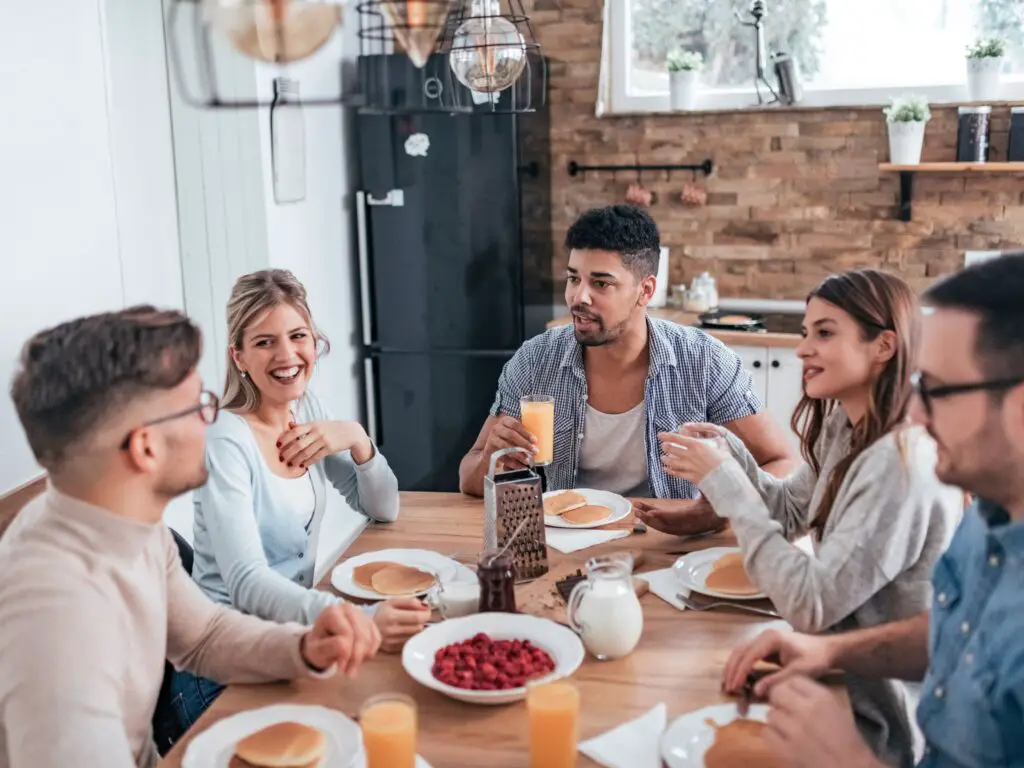
6. Pricing and Profit
Setting the right price is a balance between attracting attendees and reaching your fundraising target.
- Calculate Your Costs:
- Sum up all estimated expenses: venue rental, ingredients, paper goods, marketing materials, any paid staff.
- Divide this total cost by the estimated number of attendees to get a “per person” cost.
- Research Local Pricing:
- Visit local diners or restaurants that serve breakfast. What do they charge for a comparable meal? You want to be competitive but also ensure you make a profit.
- Determine Your Profit Margin:
- Decide how much profit you need per plate to reach your fundraising goal.
- Your selling price should be your “per person cost” + “desired profit per person.”
- Ticket Pricing Strategies:
- Standard Adult Ticket: The main price point.
- Children’s Ticket: Often a reduced price for younger attendees. Consider free for very young children (e.g., under 3).
- Family Pack: A single price for a family (e.g., 2 adults, 2 children) can be appealing.
- “Pay-It-Forward” or Donation Option: Allow guests to donate extra if they wish, or even purchase a ticket for someone who cannot afford it.
- Pre-Sale Discounts: Offer a slightly lower price for tickets purchased in advance to encourage early sales and help estimate attendance.
- Ticket Sales:
- Online: Use event ticketing platforms (e.g., Eventbrite) for convenience.
- In-Person: Sell tickets at community events, your organization’s meetings, or through volunteers.
- At the Door: Always have tickets available for purchase on the day of the event.
- Tracking: Keep a clear record of all ticket sales to monitor progress towards your goal.
7. Marketing and Promotion
Even the best-planned event won’t succeed if no one knows about it. Effective marketing is crucial.
- Craft Your Message:
- Highlight the Cause: Clearly state what the money raised will support. Use compelling language and visuals (e.g., “Every pancake helps send a child to camp!”).
- Emphasize Value: “Delicious breakfast for a great cause!” “Fun for the whole family!”
- Provide Key Details: Date, time, location, ticket price, how to buy tickets, contact information.
- Marketing Channels:
- Social Media:
- Create an event page on platforms like Facebook.
- Post regularly with engaging content: photos of previous events, sneak peeks of the menu, volunteer spotlights, stories related to your cause.
- Use relevant hashtags (e.g., #PancakeBreakfast #Fundraiser #[YourTown]Events #Charity #[YourCause]).
- Encourage sharing and tagging.
- Flyers and Posters:
- Design eye-catching flyers with all essential information.
- Distribute them widely in high-traffic areas: local businesses, community centers, schools, libraries, coffee shops, laundromats. Ask permission before posting!
- Local Media:
- Press Release: Write a concise press release announcing your event and send it to local newspapers, community news websites, and local radio stations.
- Community Calendars: Submit your event to online and print community calendars.
- Public Service Announcements (PSAs): Some local radio stations offer free PSAs for non-profit events.
- Email Marketing:
- Send out emails to your organization’s mailing list.
- Include appealing photos and direct links to ticket purchases.
- Send reminder emails closer to the event date.
- Website/Blog:
- Word of Mouth: Encourage your volunteers, staff, and supporters to personally invite their friends, family, and colleagues. Personal invitations are very powerful.
- Local Partnerships: Partner with a local business that can display a poster or sell tickets.
- Social Media:
8: Event Day Execution
The big day has arrived! This is where all your hard work comes to life.
- Pre-Event Setup (Early Morning!):
- Arrival: Volunteers and core committee members should arrive very early.
- Venue Setup: Arrange tables and chairs in the dining area. Set up serving lines, drink stations, and the toppings bar.
- Kitchen Prep: Get griddles heating. Organize ingredients. Assign cooking stations.
- Ticketing Area: Set up a clear table for ticket sales and check-ins. Have change ready if accepting cash.
- Signage: Place directional signs for restrooms, serving lines, and exits.
- Volunteer Briefing:
- Gather all volunteers for a quick meeting before guests arrive.
- Review roles, answer questions, provide last-minute instructions.
- Emphasize safety, especially in the kitchen.
- Remind everyone to be friendly and welcoming.
- Guest Flow and Serving:
- Greeting: Have friendly greeters at the entrance.
- Ticketing: Efficiently sell/check tickets.
- Serving Line:
- Design a logical flow (e.g., plates, pancakes, sides, toppings, drinks).
- Ensure food is hot and fresh. Volunteers should replenish items quickly.
- Manage lines to prevent bottlenecks.
- Seating: Have volunteers direct guests to available seating, especially during peak times.
- Managing the Kitchen:
- Griddle Management: Have dedicated cooks on the griddles, constantly producing fresh pancakes.
- Ingredient Resupply: Ensure a continuous supply of batter, eggs, and sides.
- Hygiene: Maintain strict food safety and hygiene practices. Gloves should be used for food handling.
- Temperature Control: Keep hot food hot and cold food cold.
- Problem Solving:
- Be prepared for unexpected issues (e.g., a griddle malfunctions, a supply runs low).
- Have a designated person (event coordinator) to handle problems calmly and quickly.
- Atmosphere:
- Play some background music (if appropriate for the venue).
- Keep the dining area clean and comfortable.
- Encourage volunteers to interact positively with guests.
9. Cleanup and Celebration
The event isn’t over when the last pancake is served. Post-event activities are just as important.
Cleanup
- Start cleaning immediately after guests leave.
- Divide tasks: kitchen cleanup, dining area cleanup, trash removal.
- Follow the venue’s cleaning rules carefully to get your full deposit back.
- Return any borrowed or donated items promptly.
Financial Reconciliation
- Count all money collected (tickets, donations).
- Compare expenses with your budget.
- Calculate total profit raised. This shows how successful your event was.
Thank You and Appreciation
- Volunteers: Send personalized thank you notes or emails. Mention their specific help. Consider giving a small gift.
- Donors & Sponsors: Send formal thank you letters or emails. Highlight how their support made a difference.
- Attendees: Thank them via social media or email blasts.
Sharing Your Success Story
- Community Update: Share the total amount raised and explain how funds will be used.
- Photos: Post event photos on your website, social media, or local news (with permission).
- Impact: Show the real difference made. Example: “Thanks to you, we can buy 200 new books for the school library!”
Conclusion
Planning and executing a pancake breakfast fundraiser is a rewarding endeavor that brings together delicious food, community spirit, and a shared commitment to a worthy cause. By following this comprehensive guide on How to plan a pancake breakfast fundraiser, from setting clear goals and building a dedicated team to expertly managing the event day and celebrating your achievements, your charity can create an impactful and successful event.
However, if you are looking for fundraising ideas that require no money be sure to check this out.
The aroma of sizzling pancakes will not only fill the air but will also be a symbol of your community’s generosity and the positive change you are bringing about. So, get ready to flip some pancakes and make a real difference!

